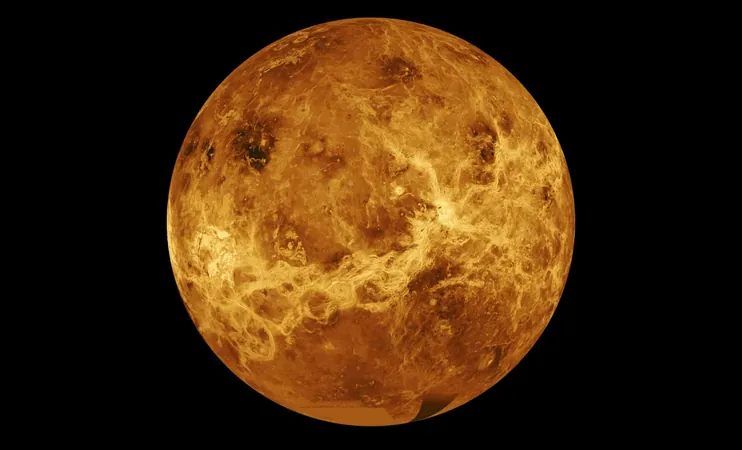
Could the North Pole Shift Nearly 90 Feet by 2100? Here's What Climate Change Might Mean for Our Planet
2025-04-18
Author: Wei
A Shocking Shift: The North Pole's Future Unveiled
Brace yourself! A groundbreaking study has revealed that dramatic ice melt resulting from climate change could drastically alter the positions of Earth’s geographic poles in the upcoming years.
According to research published in the journal Geophysical Research Letters, the North and South Poles may shift as much as 89 feet (27 meters) by the end of the century. This unsettling movement is tied to significant changes in the planet’s axis of rotation, primarily driven by melting ice sheets and the redistribution of ocean mass.
The Science Behind the Shift
As our planet spins on its axis, changes in mass distribution cause it to wobble, similar to a top. While some of these wobbles are predictable—caused by variations in atmospheric pressure and ocean currents—others stem from the complex interactions between the Earth's core and mantle.
Recent data has indicated that as ice sheets and glaciers melt at alarming rates, they contribute to these shifts in mass distribution, further tilting the balance of our planet.
Ice Melt and Future Predictions
In a collaborative study by researchers at ETH Zurich, the team analyzed pole movements from 1900 to 2018 alongside future projections of ice sheet melt to forecast potential shifts. Under a dire scenario of high greenhouse gas emissions, the North Pole could veer westward by over 89 feet by 2100. Even in a more hopeful emissions scenario, a shift of around 39 feet (12 meters) remains a significant possibility.
The primary contributors to this projected shift? Meltwater from the Greenland and Antarctic ice sheets, significantly outweighing the effects of glacial melt.
Human Impact: Beyond Natural Changes
Study co-author Mostafa Kiani Shahvandi, now an Earth scientist at the University of Vienna, highlighted that the human-caused effects on pole movement may actually exceed those from natural climate shifts since the last ice age. As ice age glaciers melted, they caused the land to rebound, redistributing weight within the Earth’s crust, which has now been compounded by current human activities.
Navigational Chaos Ahead?
What does this mean for navigation? A shifting rotational axis may spell trouble for satellite and spacecraft positioning. According to Kiani Shahvandi, scientists use the Earth's rotation axis as a reference point for locating spacecraft. Any movement of this axis could complicate accurate position tracking.
Looking to the Past for Answers
Future research is set to dive deeper into paleoclimate data, analyzing how the poles have shifted throughout history during natural climate fluctuations. These studies could provide crucial insights into the magnitude of human influence on the current displacement of the poles.
Prepare for a future that’s more unpredictable than ever!





 Brasil (PT)
Brasil (PT)
 Canada (EN)
Canada (EN)
 Chile (ES)
Chile (ES)
 Česko (CS)
Česko (CS)
 대한민국 (KO)
대한민국 (KO)
 España (ES)
España (ES)
 France (FR)
France (FR)
 Hong Kong (EN)
Hong Kong (EN)
 Italia (IT)
Italia (IT)
 日本 (JA)
日本 (JA)
 Magyarország (HU)
Magyarország (HU)
 Norge (NO)
Norge (NO)
 Polska (PL)
Polska (PL)
 Schweiz (DE)
Schweiz (DE)
 Singapore (EN)
Singapore (EN)
 Sverige (SV)
Sverige (SV)
 Suomi (FI)
Suomi (FI)
 Türkiye (TR)
Türkiye (TR)
 الإمارات العربية المتحدة (AR)
الإمارات العربية المتحدة (AR)